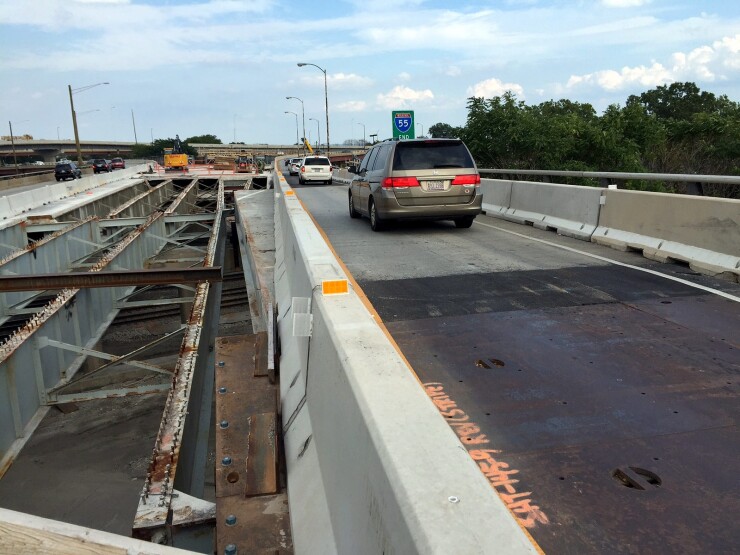DALLAS – Restoring the solvency of the depleted Federal Highway Fund is the best way to rebuild the nation's roads and bridges rather than President Donald Trump's plan that relies mostly on additional private investments, industry experts told a House panel looking at the first year of the five-year Fixing America's Surface Transportation Act.
The $305 billion FAST Act, which was signed into law in early December 2015, provided five years of funding certainty but only delayed the need to resolve the structural imbalance in the HTF, according to the testimony Wednesday before the highways panel of the House Infrastructure and Transportation Committee.

Congress has transferred $140 billion of other revenue into the HTF since 2008 to keep the fund afloat as federal gasoline tax collections failed to keep up with expenditures, said Gary Patterson, executive director of the Oklahoma Department of Transportation who was representing the American Association of State Highway and Transportation Officials.
By fiscal 2021, the first year after the FAST Act expires, a transfer of $17 billion would be needed to sustain the HTF, Patterson said, expanding to $27 billion by fiscal 2027.
"Simply put, this is a devastating scenario that we must do all we can to avoid," Patterson said. "It cannot be emphasized enough that any major transportation infrastructure package must focus on direct funding rather than on federal financing support."
Funding the next transportation bill at current baseline levels would require $120 billion of additional revenue in the HTF over six years, said Gary Thomas, president of Dallas Area Rapid Transit, who was speaking for the American Public Transportation Association.
Raising the federal gasoline tax of 18.4 cents per gallon and the diesel tax of 24.4 cents per gallon would be a good way to replenish the HTF, Thomas said. Federal public transit funding is provided by 20% of annual collections from the fuel tax and other revenues dedicated to the HTF.
"You see gasoline prices swinging every day," he said. "It is not clear how much an additional penny or penny-and-a-half would be noticed."
President Trump's $1 trillion, 10-year infrastructure program would rely heavily on investments through public-private partnerships, but P3s and private sector dollars are not a substitute for federal infrastructure funding, Thomas said.
"Direct federal funding remains essential," he said. "We have seen successful public-private partnerships, but they are simply not workable for many public transportation projects. The fact is that we will not solve our infrastructure deficit through innovative financing tools alone."
P3s are useful tools but limited in their applications, Patterson said.
"Most transportation projects simply cannot generate a sufficient revenue stream through tolls, fares, or other user fees to service debt or provide return on investment to private sector equity holders," he said.
An early morning meeting with Transportation Secretary Elaine Chao and dozens of Republican lawmakers delayed the entry to the hearing by Transportation Committee chairman Rep. Bill Shuster, R-Pa.
"I spent an hour with Secretary Chao," he said. "She came and briefed about 45 members. She talked about the infrastructure bill and how important it is to the president. Members were asking lots of great questions."
Rep. Dina Titus, D-Nevada, said Democratic lawmakers should have been included in Chao's briefing.
"I would suggest that we invite her to meet with all members of this committee, so we can have a collaborative effort," Titus said. "Maybe then they wouldn't have the problems they had with the healthcare bill."
The national infrastructure is falling apart because Congress has refused to raise the gasoline tax for more than 20 years, said Rep. Peter DeFazio, D-Ore., the committee's top Democrat.
"The lack of public funding is the holdup," he said. "Most projects suitable for P3s have to cost $1 billion to get the required return on investment that the private partners want."





